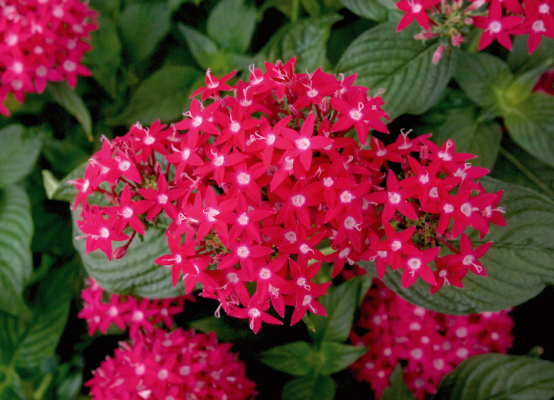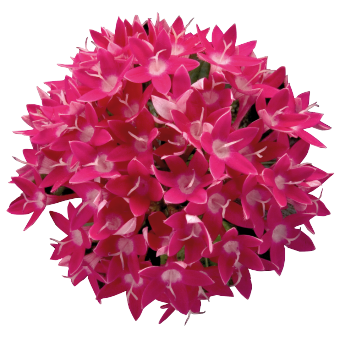

Kaleidoscope Deep Rose
Item no.: PL0203POutstanding Summer Performer
- Vigorous, well branching habit
- Profusely branching habit
- Ideal for mixed containers and landscaping
- Large, intensely colored flower clusters
Technical Guide: Click here
All information in our technical guide is based on our own trials and would therefore be as guideline only. Detailed cultivation aspects vary depending on climate, location, time of year and environmental conditions. Benary expressly disclaims any responsibility for the content of such data/information and makes no representation or warranty for the cultivation of any products listed. It is recommended that growers conduct a trial of products under their own conditions.
- Crop Time
- Spring: 14 - 17 weeks
- Height ∅
- 18 ″ / 45 cm
- Width ∅
- 11 ″ / 28 cm
- Exposure
- Sun
- Seed Form
- Pelleted Seed
- Best Uses
- Bedding, Landscape, Pot Plant
Culture guide
Usage
Attractive pot plants for indoors and outdoors, plants for bedding
Sow time
January-April
Sowing method
1 seed per plug
Germination
Sow pellets in a media with a pH range of 6.5-7.2. Maintain uniform soil moisture levels and humidity levels above 95 %. Stage I temperatures of 75-80 °F (23-26 °C) optimize germination. Irrigate with warm water with a pH range of 6.5-7.2 to avoid shocking seedlings during Stage I. Do not cover seed as light increases germination rate and improves seedling uniformity. Begin light feeding with 25-50 ppm nitrogen. Continue Stage I conditions for 7-10 days.
Growing on
Transplant plugs into 6" (15 cm) pots or hanging baskets. Grow on at 65-70°F (18-21 °C). Fertilize at 100-150 ppm nitrogen in a well-balanced mix. Monitor soil pH levels and maintain a pH above 6.5.
Media
Use a well-drained, growing substrate with 10-20 % clay, 0-15 % parts (e.g. coconut fibres, perlite, sand), 1-2 kg/m³ complete balanced fertilizer, 1-2 kg/m³ slow release fertilizer (3-9 months), iron-chelate, micronutrients, pH: 5.8-7.5.
Temperature
Grow at 17-19 °C. At temperatures below 16 °C the vegetative growth is inhibited. Just before selling harden the plants. Decrease the temperature slowly. Temperatures below 10 °C will delay the flowering. Pentas does not tolerate frost.
Fertilization
Moderate-high fertilization levels are required. Fertilize the crop weekly with 150-200 ppm nitrogen (at 1 kg/m³ slow release fertilizer in substrate), using alternating a potassium balanced fertilizer (N: K₂O-ratio: 1:1,5) and a calcium nitrate fertilizer. Avoid high ammonium and high nitrogen levels.
Prevent magnesium deficiency by applying magnesium sulphate (0,025 %) 1-2 times. Check regularly pH value in substrate, because at pH above 6.0 iron deficiency (yellow edges on the leaves) can appear and at pH below 5.0 iron toxicity (necrotic spots on the leaves) can arise. In case of iron deficiency apply iron-chelate for 1-2 times and in case of iron toxicity adjust the pH in substrate with lime.
Stage I Starts with the radicle breaking through the testa. The roots are touching the medium. Ends with fully developed cotyledons.
Stage II Starts from fully developed cotyledons. Ends with the fully developed true leaf or true leaf pair.
Stage III Starts from the fully developed true leaf or true leaf pair and ends with 80% of the young plants being marketable.
Stage IV All young plants are ready for sale and in the process of being hardened off. This stage lasts about 7 days.
The cultural recommendations are based on results from trials conducted under Central European conditions. Different conditions in other parts of the world may lead to deviations in results achieved.





